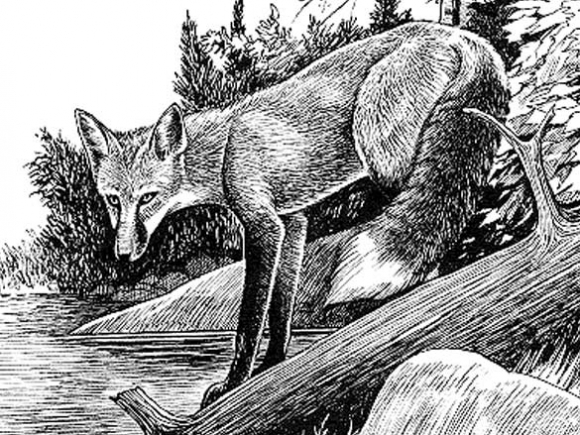A fox sighting is always a delight

In the natural world here in the Blue Ridge, there are certain visual images that rivet the attention of human beholders. One such is a timber rattlesnake suddenly encountered in the wild. That sight literally galvanizes the senses. The vibrating rattle-tipped tail sounds its uncanny almost-musical warning … you freeze in mid-step, holding your breath but unaware that you are doing so … the hair on the back of your neck stands on end … the event remains imprinted in your memory bank.
Another sort of image — that of a red fox suddenly glimpsed — is one of pure delight. Elizabeth and I have encountered red foxes with some frequency through the years. But, for whatever reason, an encounter I had in the mid-1990s registered with me in great detail. I was driving alone south of Asheville on the Blue Ridge Parkway. A light early morning mist was swirling in my truck’s headlights. As if from out of nowhere, the fox suddenly appeared, moving across the roadway with nimble feet in a dainty trot. On the roadside embankment, it paused, lifted a front paw, and turned to look at the oncoming vehicle. The animal's eyes looked into mine without fear. It was simply curious. With heightened awareness, I could see drops of moisture clinging to the hairs that outlined the creature’s silhouette. That was the image — a fox in the rain — that remains with me. Then, with a single catlike bound, it disappeared as quickly as it had appeared in a graceful flow of movement.
Sometimes a red fox will be encountered that lives up to its name; that is, it will be a vivid red. But most red foxes Elizabeth and I have seen displayed a tawny rusty-red to reddish-yellow coloration. Sometimes they will even closely resemble a gray fox. And since a gray fox often has some reddish tinges in its coat, the two species found in the Blue Ridge can be confused. But a gray fox is smaller than a red fox and the tip of its tail is dark gray or black. The red fox always displays a white-tipped tail.
There has been some debate as to whether or not the red fox is actually native to North America. The editors of The Audubon Society Field Guide to North American Mammals (1980) noted that, “In the mid-18th century, red foxes were imported from England and released in New York, New Jersey, Maryland, Delaware, and Virginia by landowners who enjoyed riding to the hounds. At the time, the gray fox — not a good substitute for the red, as it cannot run as fast or as long — had not yet expanded its range north into these areas. The red foxes that now populate almost all of the states are combined strains derived from the interbreeding of imported foxes with native races, which, encouraged by settlement, gradually expanded their range.” On the other hand, in The World of the Red Fox (1969) Leonard Lee Rue III quoted New Englander Thomas Morton, who in 1634 recorded that, “The Foxes are of two coloures; the one redd, the other gray … and are of good furre; they doe not stinke, as the Foxes of England.”
Be that as it may, both the red fox (juhla) and the gray fox (inali) have secured places in Cherokee lore. If an individual who was setting off on a journey should startle a fox that looked back and barked, this was a sure sign that a relative or neighbor would soon die. A fox howling near one's house warned of an impending illness by one of the humans residing therein. But foxes could also be helpful. One of the Cherokee sacred formulas contained an incantation evoking them as a curative for frostbite. Advance scouts sent out to locate enemies mimicked the barks and yips of foxes to stay in touch with one another. Portrayed in one of the stories as a quick-witted trickster, a fox was responsible for the loss of most of the bear’s tail, which had at one time been long and bushy.
George Ellison is a naturalist and writer. He can be reached at This email address is being protected from spambots. You need JavaScript enabled to view it..
Editor’s note: This column first appeared in an April 2006 edition of The Smoky Mountain News.





